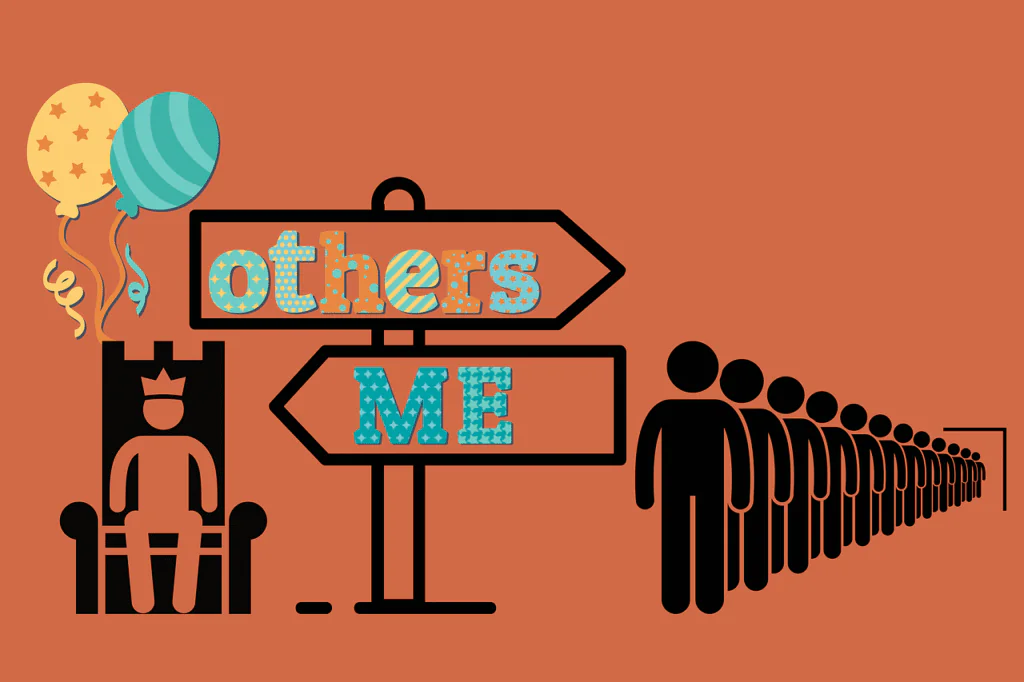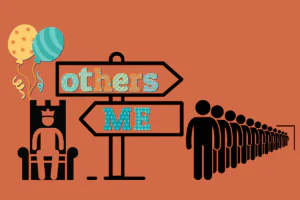Guest blog by Karen Kuhlman, LSW, CADC
Look at social media these days or read online news and you likely will be bombarded by stories about narcissism – a narcissistic ex, narcissistic parents, and even narcissistic pets. Narcissism has become a cultural phenomenon – an increasingly popular and jargonized buzzword in our Western culture. The word has become synonymous with extreme selfishness, manipulation, and emotional abuse.
But what is narcissism really? Do you really need to understand the nuances of a diagnosis of Narcissistic Personality Disorder (NPD) versus someone just having narcissistic personality traits? If you are a mental health professional, absolutely! But if you’re not, the most important thing to understand is the very real (and serious) consequences of narcissism and emotional abuse perpetrated in relationships.
As a clinician who utilizes the psychological framework of attachment theory in my work, I view narcissism through the intersection of biology (inheritable traits) and environment (developmental experiences) as it relates to disruptions in the parent/caregiver and child attachment relationship.
Narcissist Personality Disorder vs Narcissistic Personality Styles
According to the American Psychiatric Association’s Diagnostic and Statistical Manual of Mental Disorders (DSM-5), the diagnostic criteria for Narcissistic Personality Disorder (NPD) indicate it is “a pervasive pattern of grandiosity (in fantasy or behavior), need for admiration, and lack of empathy that begins in early adulthood.” To qualify as a disorder, the pattern of behavior needs to be present in several different contexts and must include five or more of the following:
- Grandiose behavior
- A preoccupation with “unlimited success, power, brilliance, beauty, or ideal love”
- A belief they are “special and unique and can only be understood by, or should associate with, other special or high-status people”
- A need for “excessive admiration”
- A sense of entitlement
- Taking advantage of others to achieve “his or her own ends”
- A lack of empathy and being “unwilling to recognize or identify with the feelings and needs of others”
- Being envious of others and/or thinking they are envied by others
- Arrogant behaviors and attitudes
Someone who exhibits a narcissistic personality style may have certain attributes of the diagnostic criteria, but fall short of meeting the full criteria to qualify for the NPD diagnosis. Having said that, the trait deficiencies of both a diagnosis of NPD and someone with a narcissist personality style (some attributes of NPD but does not meet the full criteria), can have the same influence on their relationship partners.
How Does Narcissism Develop
Whether it is narcissism in the diagnosable disorder (NPD) or in a series of personality traits, it is typically created by biology and environment coming together in an attachment disruption or an attachment wound.
An attachment disruption is a severe or prolonged gap in parent/caregiver availability or responsiveness with their child. In other words, the problem in the connection, or bond, is ongoing and left unrepaired. These disruptions cause ‘injuries’ or attachment wounds in the emotional world of the child. If not repaired, these wounds can lead to the child developing maladaptive behaviors and defense responses. In turn, these can lead to the development of narcissism.
Related: Married to Someone with Childhood Trauma? How it Affects Relationships
Attachment disruptions and wounds create an Insecure Attachment style. Subtypes of an Insecure Attachment style are:
Anxious
An anxiously attached person may not have been secure in the knowledge that their caregiver loved and supported them unconditionally. The parent may have only connected with them on a conditional level. For example, “I love you IF you are great at sports” or “I love you WHEN you get good grades.” The anxiously attached person may also have had a caregiver or a parent who was abusive, neglectful, or overly permissive. These attachment disruptions can lead to attachment wounds.
Avoidant
An avoidantly attached person may never have believed that their needs were going to be met by their parent or caregiver. The child may have thought, “I know you aren’t going to be there for me, so why even bother,” or “If I count on you, I will be disappointed.” They may also have had a caregiver or a parent who was abusive, addicted, and absent, which can also lead to attachment disruptions.
Disorganized
A disorganized attachment style is different from an anxious or avoidant attachment style. Consistency in the disruptive parental/caregiver behavior with the child creates the former two subtypes. This leads to a fairly consistent survival strategy in the child. In the disorganized attachment style, parental/caregiver behavior is erratic and frightening for the child, leading to chronic attachment disruptions. The child ends up having to toggle between being anxious or avoidant, which leads to deep attachment wounds and frequently unpredictable and erratic behavior.
It is important to note that a person who has experienced attachment disruptions as a child does not always become a narcissist. However, a narcissist has almost always experienced attachment disruption and wounds.
What these attachment styles have in common is that the insecurely attached never feel safe in relationships, which makes real intimacy difficult. Narcissists are drawn to insecurely attached people – especially those who empathically want to understand others, but may have limited self-worth and esteem. Receiving validation and approval from connecting to others feels especially good for an insecurely attached person. However, the narcissist craves power, not connection. The push and pull of a narcissistic relationship lays the groundwork for an emotional abuse cycle.
Related: Three Ways Childhood Trauma Can Affect Your Adult Relationships
The Cycle of Narcissistic Abuse
The cycle of narcissistic abuse has three stages:
Idealization:
This is the early stage of the relationship. It feels like a fairy tale. For a narcissist, this is a part of their strategy and is known as “love bombing.” The narcissist is overtly attentive during this stage and lavishes gifts, compliments, and devotion on the partner. Receiving this lavish attention makes the partner feel special and adored. The partner mirrors this admiration back to the narcissist. This admiration is what the narcissist wants and needs. In a healthy relationship, the infatuated newness (sometimes called limerence) wears off eventually, and you are left with either a more lasting connection based on intimacy (in the best of circumstances) or you move on.
Conflict and Devaluation:
The middle stages of narcissistic and emotional abuse typically involve conflict and devaluation. The honeymoon has come to an end, and real life intrudes. The partner of the narcissist disagrees with them, does something the narcissist does not like, or does something the narcissist feels is threatening to their idealized version of themselves. Then the narcissist begins devaluing and gaslighting the partner. The narcissist diminishes and disparages the partner. Subsequently the rejection, minimization, cruelty, and criticism toward the partner take root to destroy the partner’s self-esteem.
Discard and/or Hoover:
The narcissist then completely discards and withdraws from their partner as a form of punishment and as a bid for their partner to “try harder” to please them. The narcissist may find another partner who meets their need for domination and control, or the narcissist will attempt to hoover their partner back into their sphere of influence.
The partner feels low in their self-esteem, and again seeking validation from the connection, strives to understand the narcissist. Instead they are coerced and manipulated back into the web of the narcissist. And the narcissist relationship/emotional abuse cycle repeats.
Recovery from a Narcissist Relationship/Emotional Abuse
Recovery from narcissistic abuse is a progression that also has three stages:
Awareness: Often, partners live in a state of denial given their poor sense of self-worth and their need for outside validation. The partner feels that if they only try harder, they will get the love they crave. The narcissist needs this adoration to feel in control. The crucial first stage in recovery is recognizing that narcissistic and emotional abuse is occurring.
Acceptance: This stage centers on realizing that in a healthy relationship, each partner deserves to feel safe, both physically and emotionally. And the other key realization in this stage is that the first, most lasting, and sustaining relationship begins with Self.
Action: This third stage is making the commitment to making changes in one’s own life a priority backed up by action. Finding support, setting boundaries, learning coping skills, and prioritizing self-care are hallmarks of this stage.
Treatment for Narcissist and Emotional Abuse
If you’re aware that you have been affected by narcissistic and emotional abuse, and you’ve realized that you deserve to be emotionally and physically safe, you may be ready to take action.
Find Support
Narcissistic and emotional abuse is never your fault. Find a support and wellness care team for your healing journey. This can include in-person or online individual therapy, group therapy, and peer support groups. These resources can help.
- National Domestic Violence Hotline
- National Alliance on Mental Illness
- Sharewell – peer support for emotional abuse
- Change Within Reach
Self-Care
Prioritize yourself. Demonstrate self-compassion for yourself – the Self who deserves care. It can take time to completely disengage from unhealthy patterns. Moving the body, healthy nourishing, hydrating, reaching out to friends for support, beginning a journaling practice, and learning a new skill are just a few ways of beginning the process of healing.
The term narcissism has been used and framed in a somewhat reductive way in recent times. The differences in NPD and personality traits should not diminish the very real consequences of narcissistic behaviors and their impact on others. Narcissistic and emotional abuse is never ever the partner’s fault. Partners are experiencing their own attachment wounds that must be healed. Recovery from narcissistic and emotional abuse is possible. It is a progression and may be, at times, frustrating, overwhelming, and lonely. Yet, the Self you meet on your healing journey makes it worth taking.
Karen Kuhlman is a licensed therapist and addiction specialist at Life Care Wellness, a group psychotherapy practice in Glen Ellyn, Sycamore, and Chicago (Jefferson Park), Illinois. Using an attachment lens, Karen specializes in treating substance use and process addictions, and uses DBT, IFS, and EMDR in her work. Karen firmly believes that the greatest challenges in our lives are also our greatest opportunities for growth and healing.






